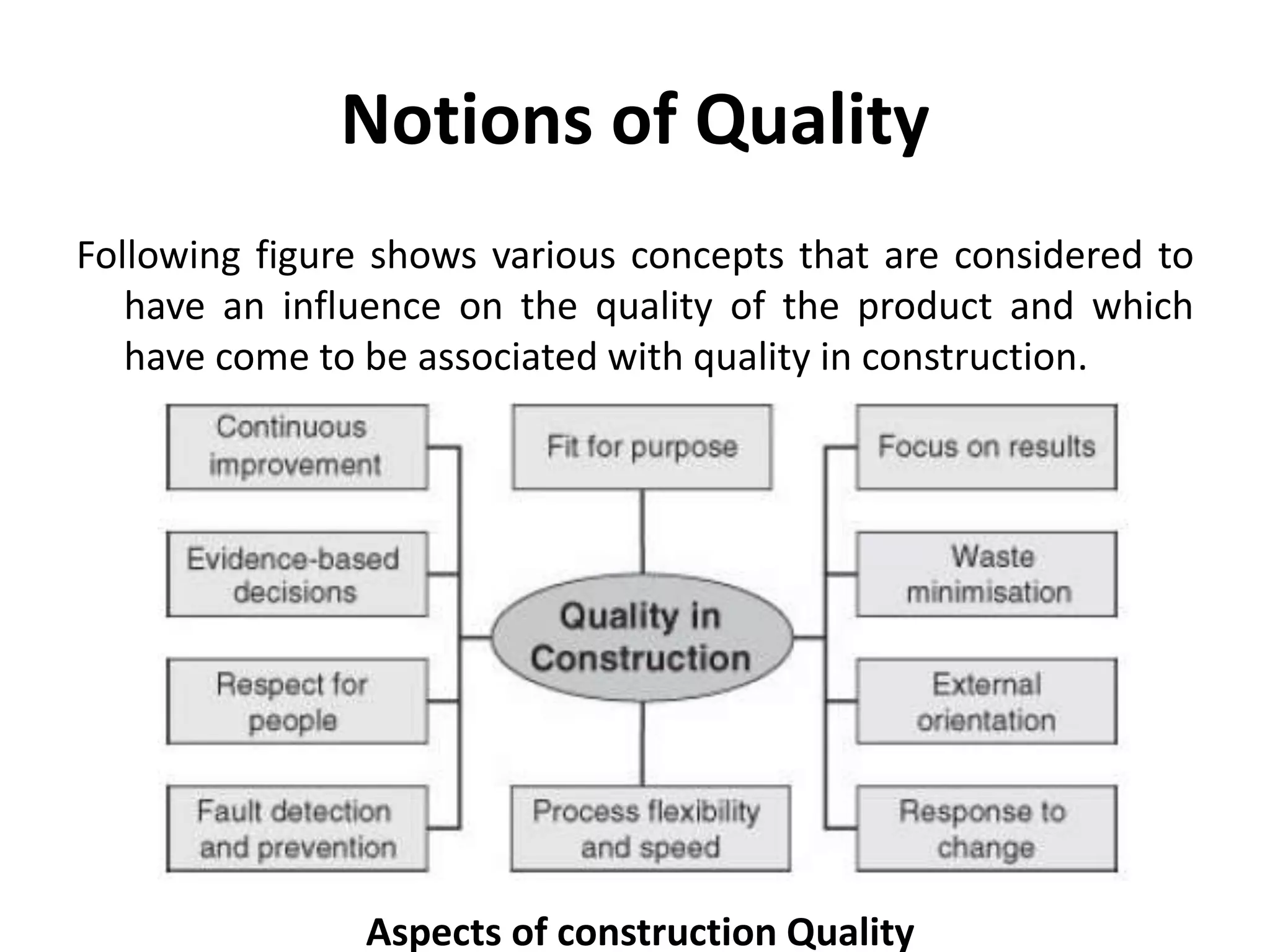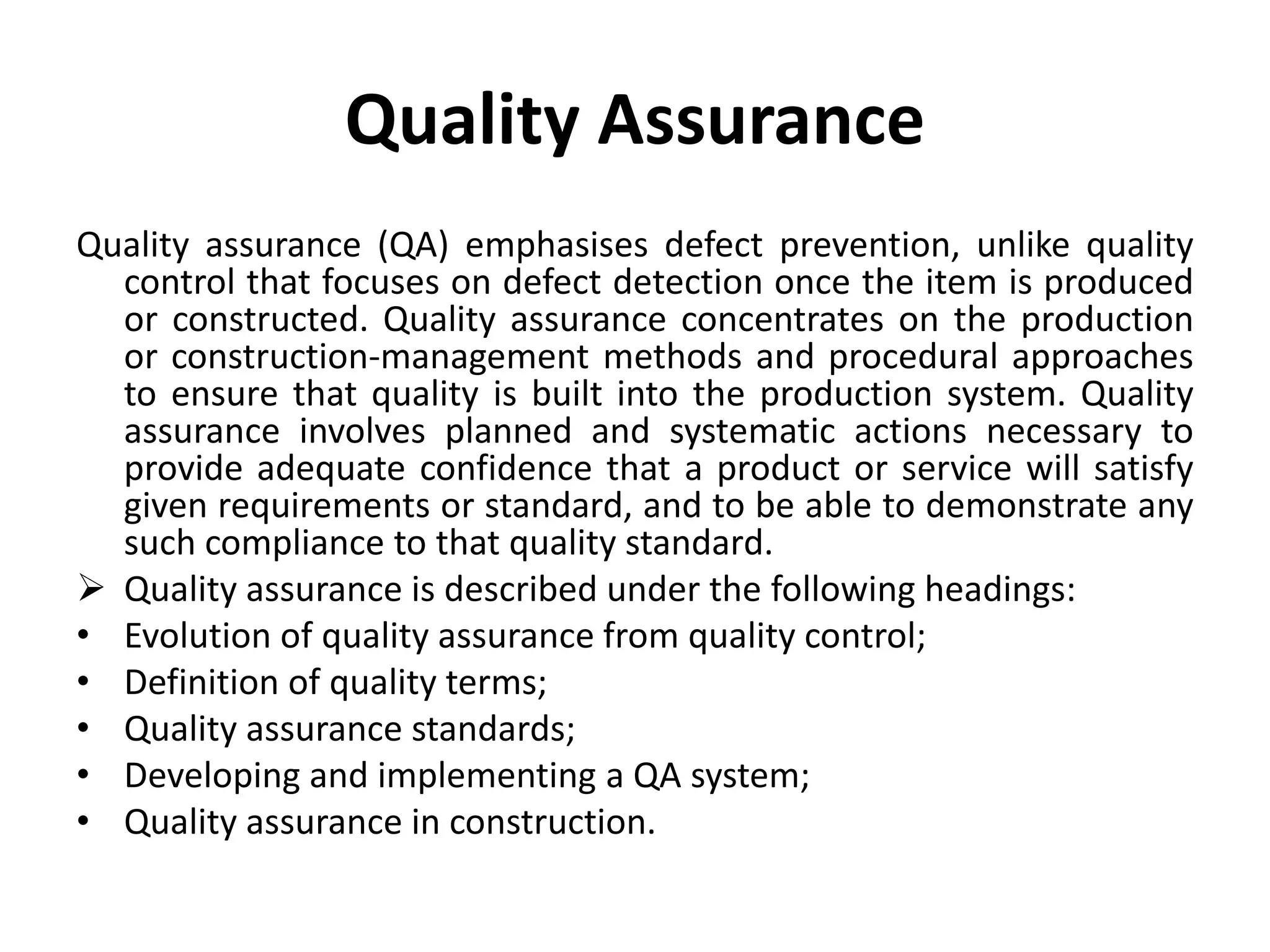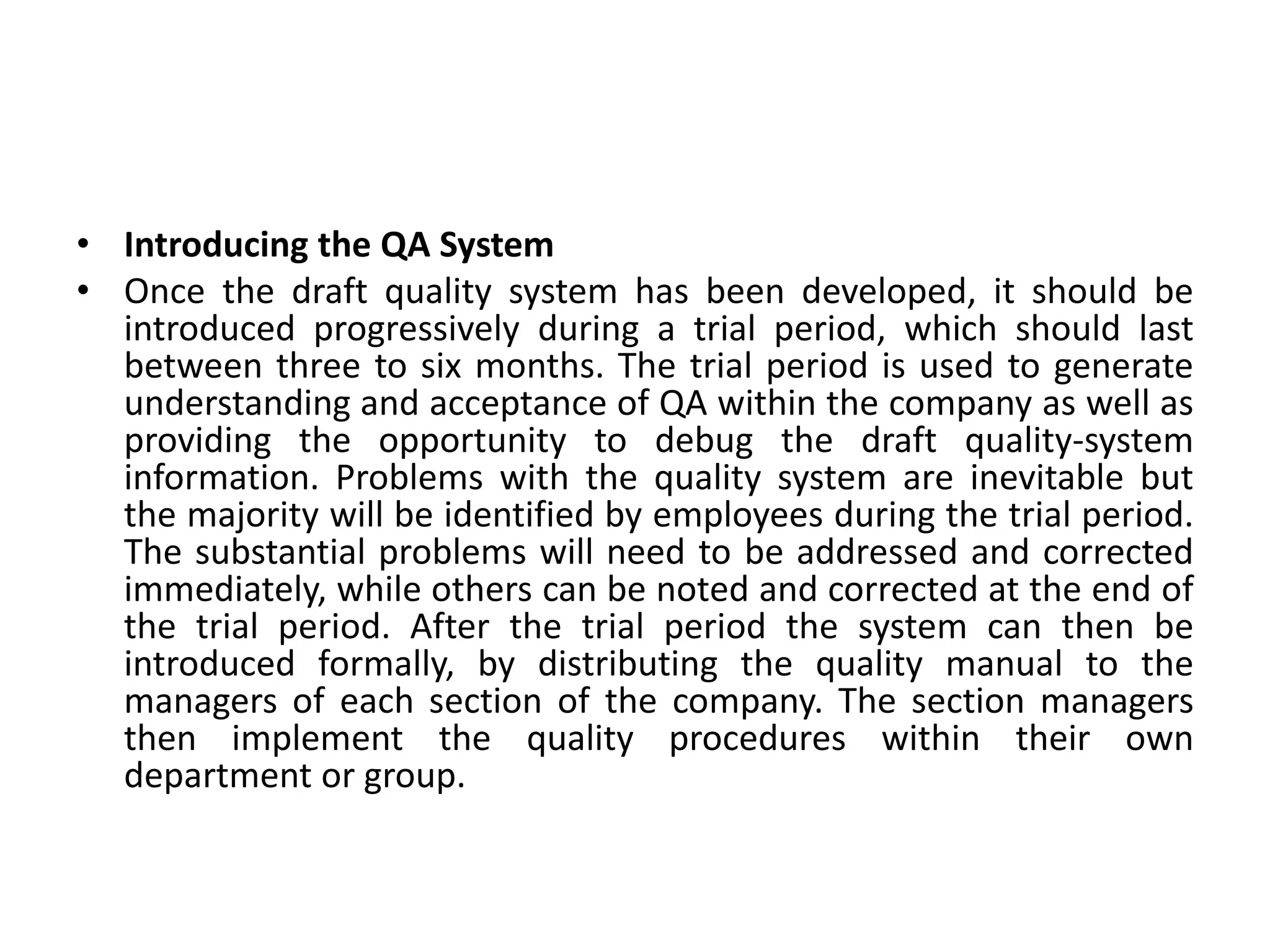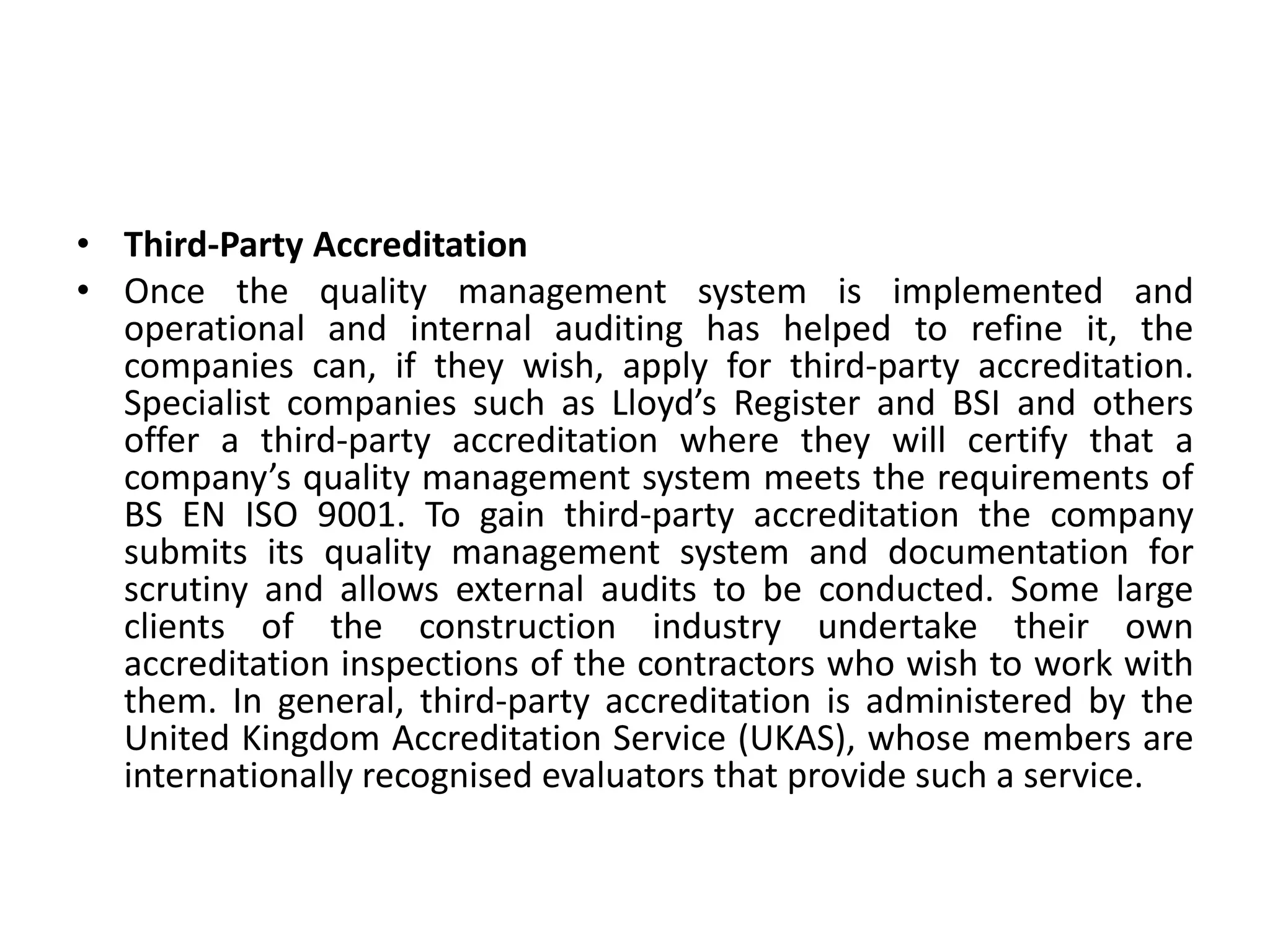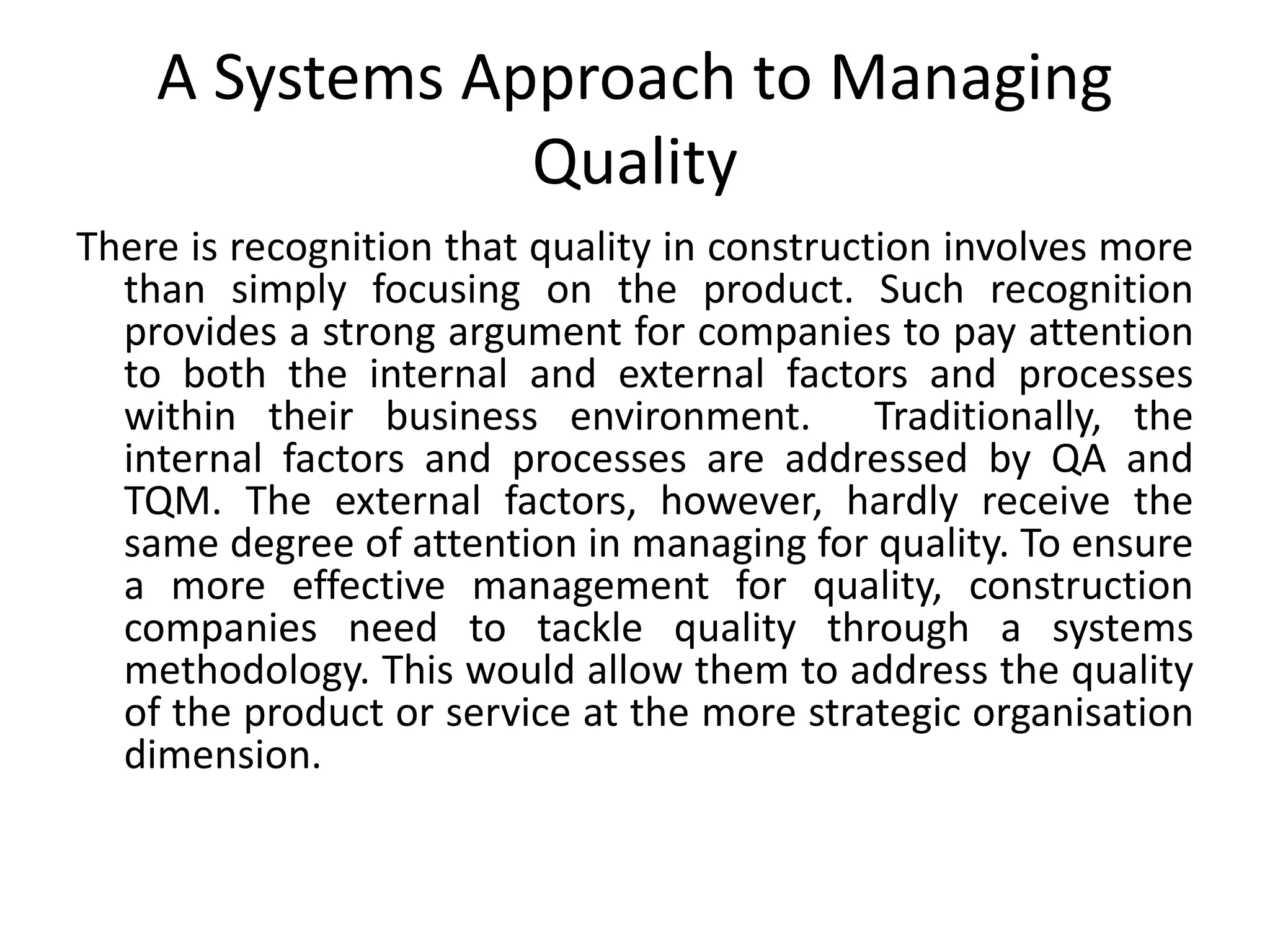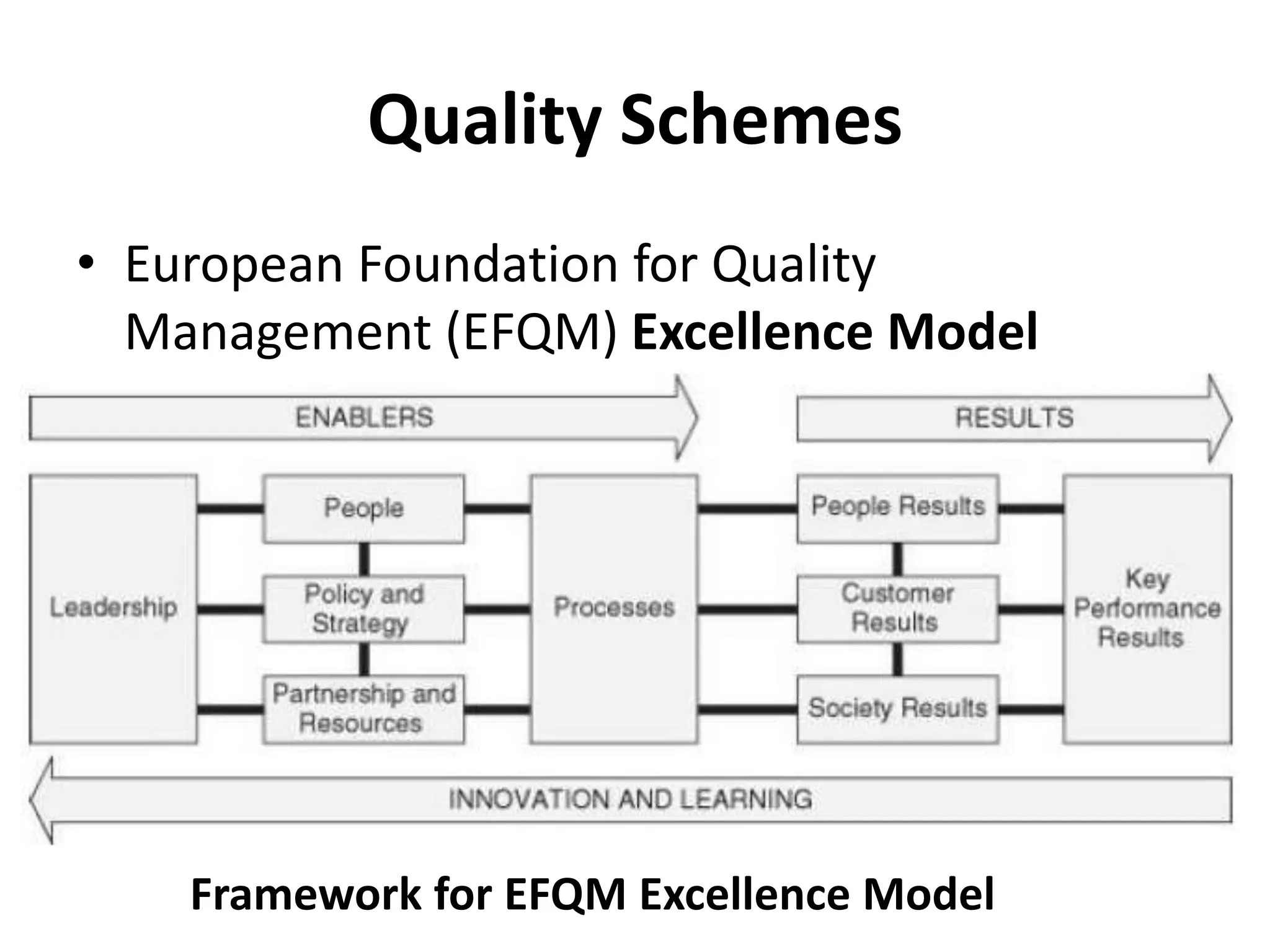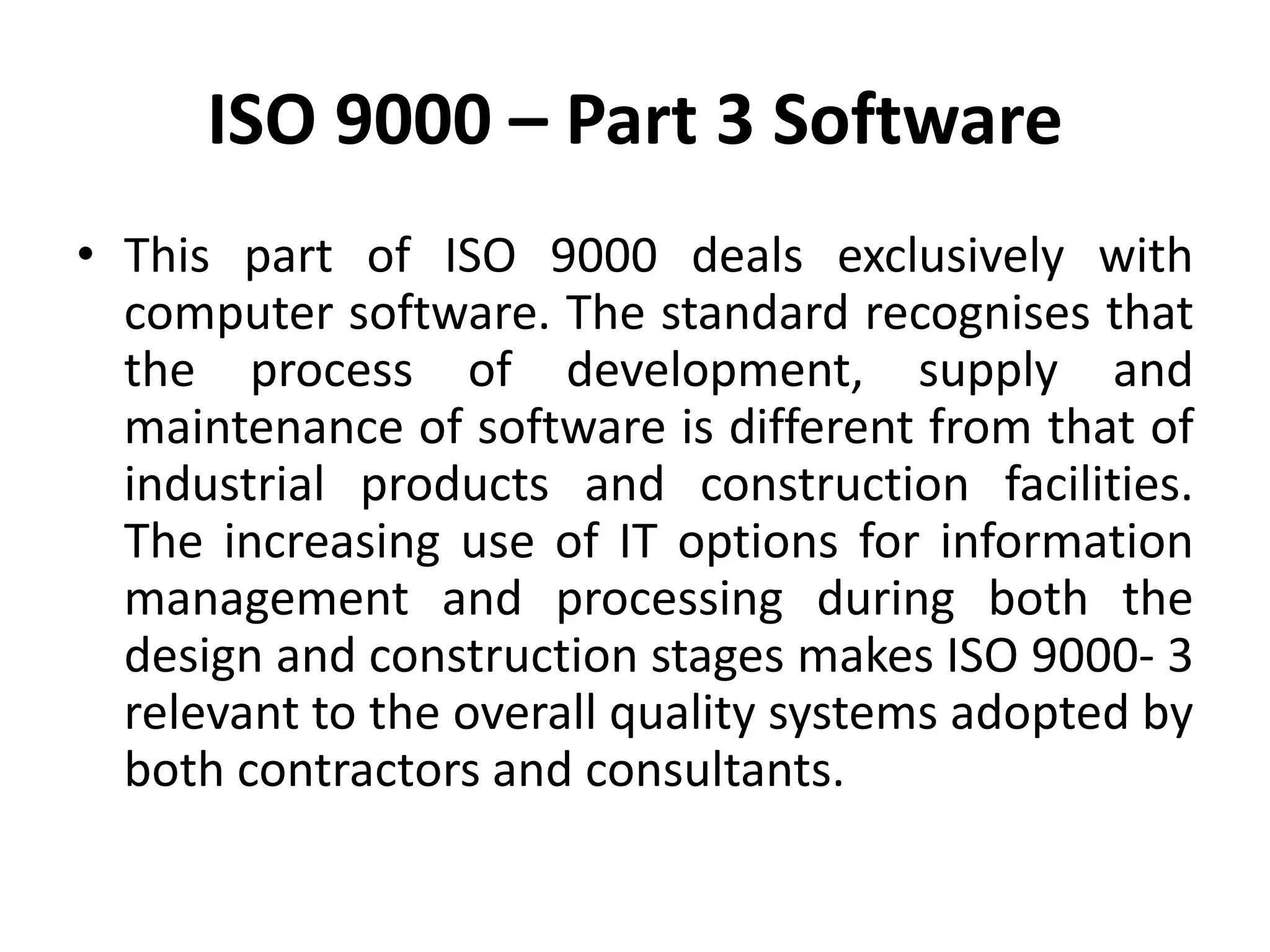This document discusses quality management systems in construction. It begins by explaining how quality has become important for construction companies to remain competitive. It then outlines different concepts of quality and defines quality assurance as focusing on preventing defects through production and construction management methods. The document goes on to describe the typical stages of developing and implementing a quality assurance system - establishing awareness, developing quality manuals, introducing the system, and evaluating the system. It emphasizes that a systems approach is needed to effectively manage quality by addressing both internal and external factors.


